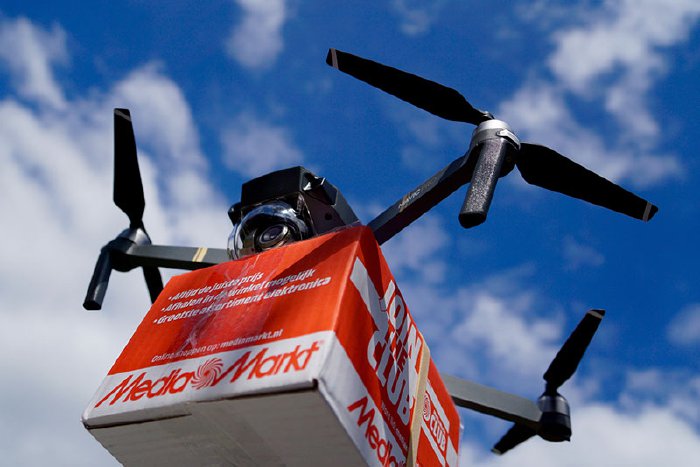
By Dan Rafter
Could sending packages from distribution facilities by drone instead of with trucks reduce carbon dioxide emissions? A recent study by University of Washington transportation engineers says it could … in the right circumstances.
The study found that drones have lower carbon dioxide emissions when they fly short routes with few deliveries. Trucks are friendlier to the environment when delivery routes have many stops or stretch farther from a central distribution point.
The most environmentally sound approach, then, might be for companies to rely on both trucks and drones. The University of Washington study found that drones compete especially well against trucks for lighter packages, anything from a bottle of medicine to children’s clothing. The study found, though, that the carbon benefits disappear as the weight of a package rises. That’s because drones have to use more energy to stay in there when they are carrying heavier loads.
Anne Goodchild, lead author of the report and an associate professor of civil and environmental engineering at the university, said that she didn’t expect drones to compete with trucks when it comes to carbon dioxide emissions. The results of the study showing that drones perform so well for light packages with fewer destinations surprised her, she said.
But when companies are making decisions about where to locate their distribution centers and how to deliver packages from these facilities, they must look at the widest range of factors, considering everything from the density of nearby customers to the size of the packages that these companies are delivering.
“When comparing drones to trucks, you can’t just say one is better than the other when it comes to the environment,” Goodchild said. “We only looked at carbon dioxide emissions in our study. You can’t make a general conclusion, though. It depends on the density of customers, the size of the load, the size of the individual packages, the frequencies at which they are delivered, the timelines. Finding the optimal location for a distribution center depends on all these factors.”
Goodchild said that she expects companies to continue to move distribution centers closer to denser urban populations as customers continue to demand that the toys, clothes and appliances they order online arrive at their doors in fewer days.
“Typically, companies making a high volume of deliveries, and needing to do that in a very short time period, prefer to be located closer to the customer,” Goodchild said. “That’s a contrast to the trend of the last 20 years, where companies were moving warehouses farther away from urban centers in search of lower costs and larger land areas. That is changing today. I don’t think that is being driven by any environmental reasons, but by the demand from customers.”
When companies do locate closer to urban areas, they will have to look at all options for delivering their packages to their customers, whether they decide to do that with trucks that can transport more items at once or drones that can quickly deliver smaller, lighter loads.
Goodchild said she’d like to see engineers put more effort into designing lighter-weight trucks. Trucks are still extremely heavy, and the fleets that companies use to transport their products has barely evolved during the last few decades. Goodchild said that if engineers focused on making trucks lighter, as they’ve already done with drones, they could do even more good for both the environment and the transportation industry.